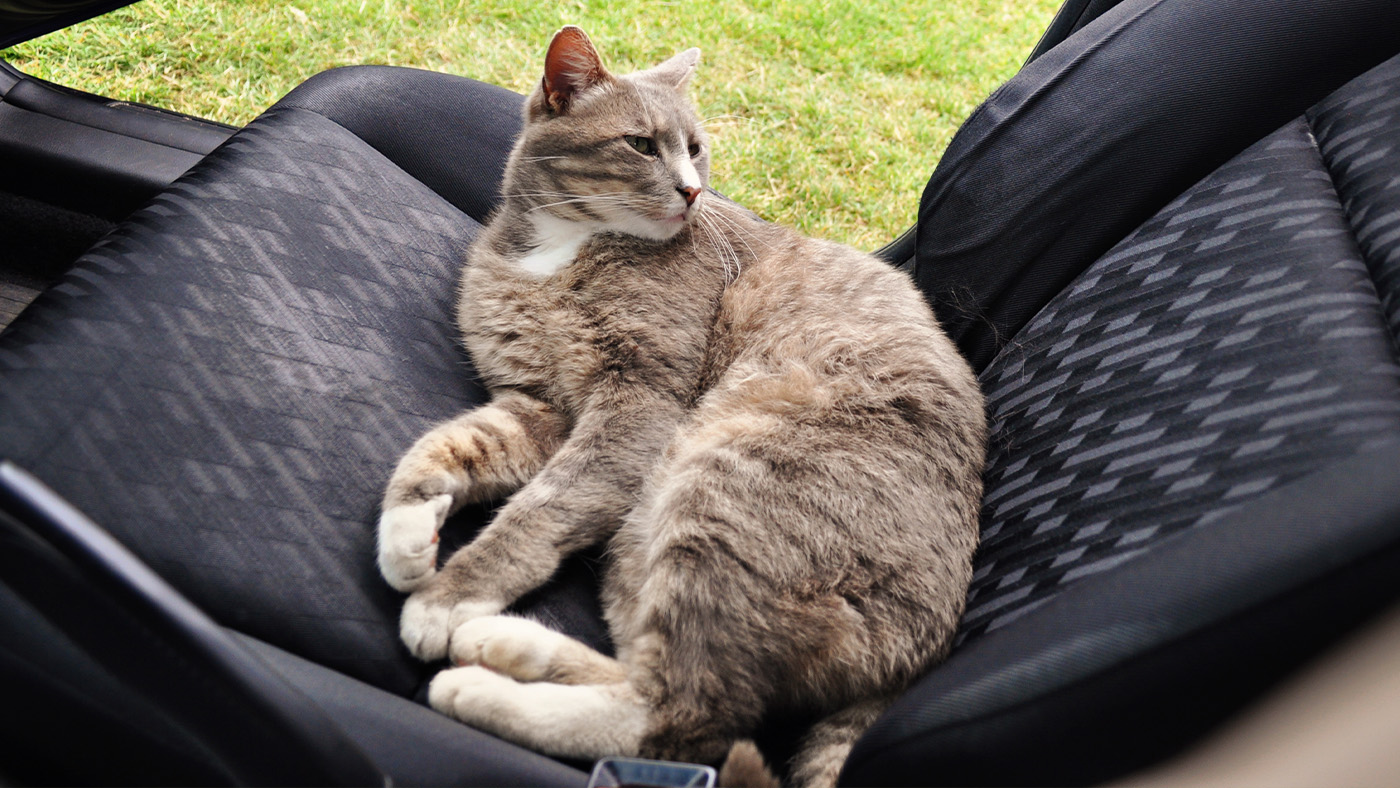How to play with a dog: Tips and ideas from a vet
Learning how to play with a dog isn't just great for your pup's mental and physical health, it'll help deepen your bond too!
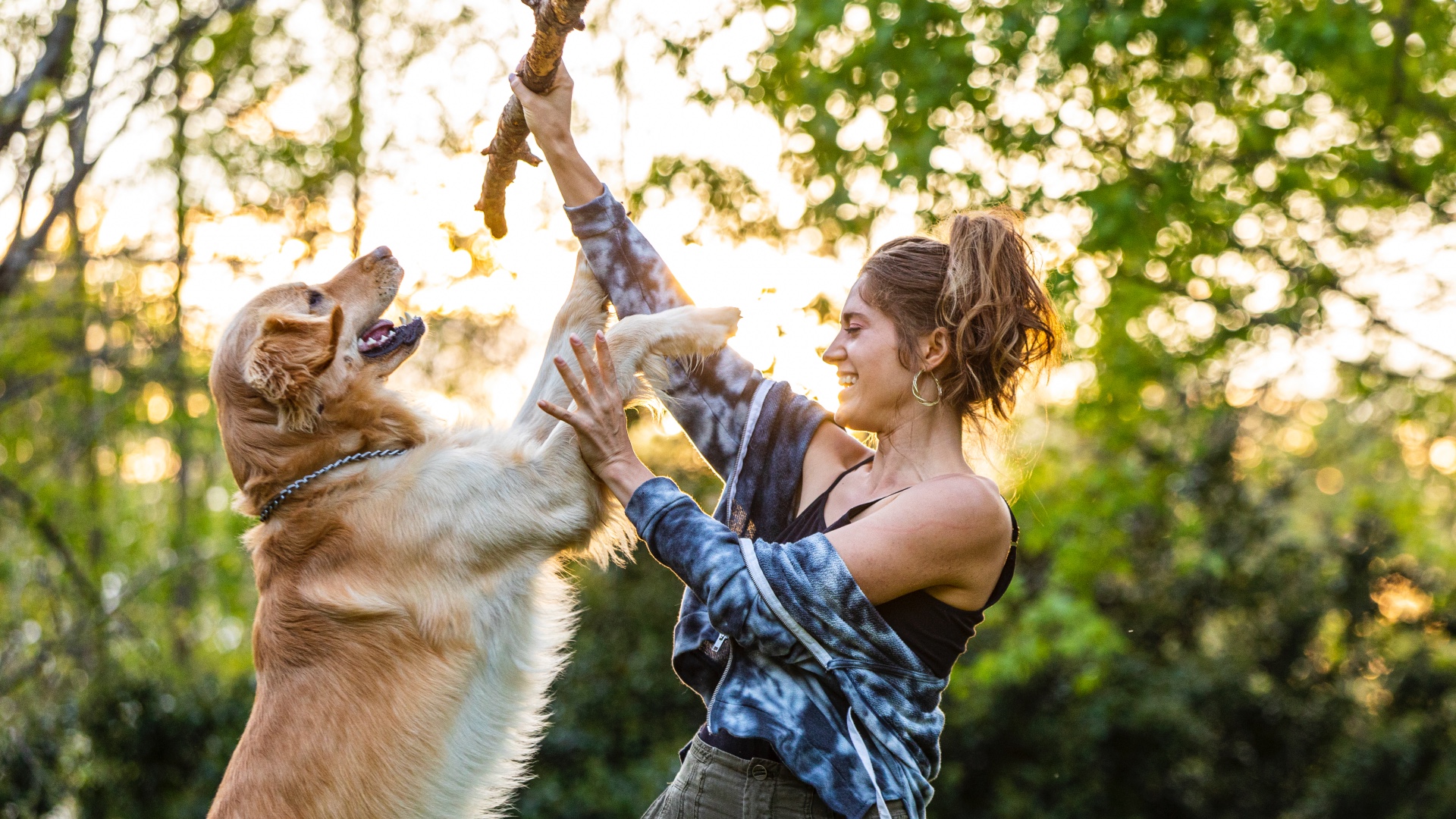
If you don't already know how to play with a dog and are keen to learn, you've come to the right place. While play can seem like such a simple thing that doesn't require much thought, there's more to a successful play session than you might think!
Playtime with the best dog toys is an important part of your pup’s daily routine. Not only can it help to strengthen the bond the two of you share, but it's also a wonderful way to give your dog's mental and physical wellbeing a boost.
Regular play sessions are a wonderful way to alleviate anxiety and stress, banish boredom, burn calories and even teach your dog new behaviors. Dogs that don't get enough stimulation can become destructive, so it's important to set aside at least an hour a day to engage in play and exercise with your dog.
And the good news is that play can include so many things, from brain games for dogs that will give your pup a good mental workout to a vigorous session of fetch that will get that heart pumping, there are so many ways to incorporate exercise into your dog's day. Below, Dr. Elizabeth Racine reveals her top tips for playing with your dog. Plus, Dr. Lily Richards shares a few of her favorite games to get you started.

Dr. Elizabeth Racine is a doctor in veterinary medicine, after graduating from Atlantic Veterinary College (AVC) in 2017. Whilst there, Dr Racine was the Co-Founder and Co-President of the AVC Nutrition Club and was also actively involved in many other clubs at AVC, including: Pathology Club. Bovine Club, Teaching Animal Enrichment Club, Small Ruminant Club, and Internal Medicine Club. She now covers all things related to pet health and wellness.

Dr. Lily Richards is a vet with 11 years of experience in farm, equine, small animal and exotic patient care. After running a busy clinic she took a step into client education focusing on getting the right information to those that need it and are searching for help and advice from professionals online.
Benefits of playing with your dog
"Playing with your dog has countless benefits from physical to mental health," explains Richards. "Depending on the type of play and activity level required, moving around improves muscle tone, strength, lung capacity, and provides the much needed energy relieving activity dogs crave (it doesn’t replace a regular walking exercise regime however, but it can complement it)."
If you're looking for ways for improving your relationship with your dog, Richards says play is a great option — not to mention all the mental health benefits it can offer.
"Being mentally stimulated is just as important as physical activity and so seeking or scent games as well as learning new tricks can help with anxiety in dogs and build on dog-owner bonds. Less stress through these interactions can lead to better rest and sleep quality which has a knock on effect by improving body repair during that sleep phase leading to overall better health. Who knew just a bit of fun could do so much!"
Tips for playing with your dog
1. Avoid using your hands or body
Have you ever met a mouthy puppy, or an adult dog that was a little too nippy during play? This can often happen when a dog learns to view people as an acceptable chew toy.
Puppies naturally like to initiate play by nipping, pulling on clothing, or biting, but it is best not to encourage this behavior. This type of play is definitely not cute once your dog is fully grown, which is why learning how to stop a puppy biting, mouthing or nipping early on is so important.
To discourage your dog from nipping, avoid games that involve using your hands and body, like wrestling or rough-housing. This type of play can send mixed signals and may encourage your dog to go after your hands and legs whenever he wants to play.
Instead, teach your dog to play with appropriate chew toys. You can do this by rewarding good play behavior with the best dog treats, petting, and lots of praise. If your dog does get nippy during play, put your hands behind your back or simply get up and walk away. If you practice this consistently, your pup will learn that playtime ends when he gets too rough.
2. Incorporate a variety of toys to alleviate boredom
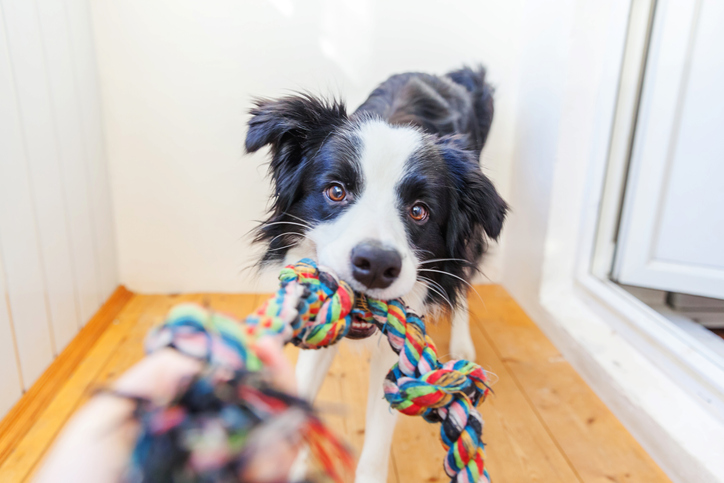
Your dog will quickly get bored with the same old toys just sitting on the floor. Try splitting the toys into groups and rotating them every few weeks so your dog always has something new to play with.
Each group should include a variety of toys, such as the best chew toys, plush toys, and the best rope toys. Make sure you also set aside time every day to participate in active play time with your dog. Most dogs prefer playing with their owners over playing with toys alone. You can even make up your own games and activities to keep your dog on his toes. You could try playing hide and seek with your dog.
Remember, play time isn’t just about getting exercise. You also need to stimulate your dog’s brain and give him something to think about. Adding the best dog puzzle toys to your rotation is a great way to provide mental stimulation for your dog.
Fill the toy up with your dog’s favorite treats or even his regular meal. He’ll have a blast working to get all those tasty snacks. If your dog has never used puzzle toys before, pick something fairly simple to start so that he can easily get the treats. Once he gets the idea, you can graduate to more complicated puzzles or even build a few of your own.
3. Choose toys that are safe and fun for your dog
One of the biggest concerns with many dog toys is how they will affect your dog’s teeth. Many toys and bones are too hard and may cause damaged or broken teeth. A good rule of thumb is that if the toy is too hard to indent with your thumbnail, then it’s too hard for your pup’s teeth.
Tennis balls can also pose a risk to your dog’s oral health, especially if your dog plays with them regularly. That yellow fuzz is highly abrasive and may cause excessive wear and tear on your dog’s tooth enamel. If your dog can’t live without a good game of fetch, try switching to smooth balls instead to keep his teeth healthy.
Make sure you also check your dog’s toys regularly to look for any damage or small pieces that could be swallowed. Small bits of plastic or fuzz may seem harmless, but if ingested they can cause digestive upset and intestinal blockage, which is dangerous for your dog and costly to fix.
Stick with toys specifically made for dogs and discard any that your dog has damaged. Our guide to the best durable dog toys offers some great ideas.
4. Start small
"Start with short games and be led by them," Richards advises. "If your dog is eagerly joining in or engaged in the activity, great. Watch for signs of disengagement or fatigue, that's perhaps enough fun for now. As your pup gets older they may want longer play sessions but build up to them. Shorter games more frequently are a useful break between tasks for those of us who work from home. Build the interactions into your day so they can feel part of the family which strengthens your bond with them."
5. Reward often
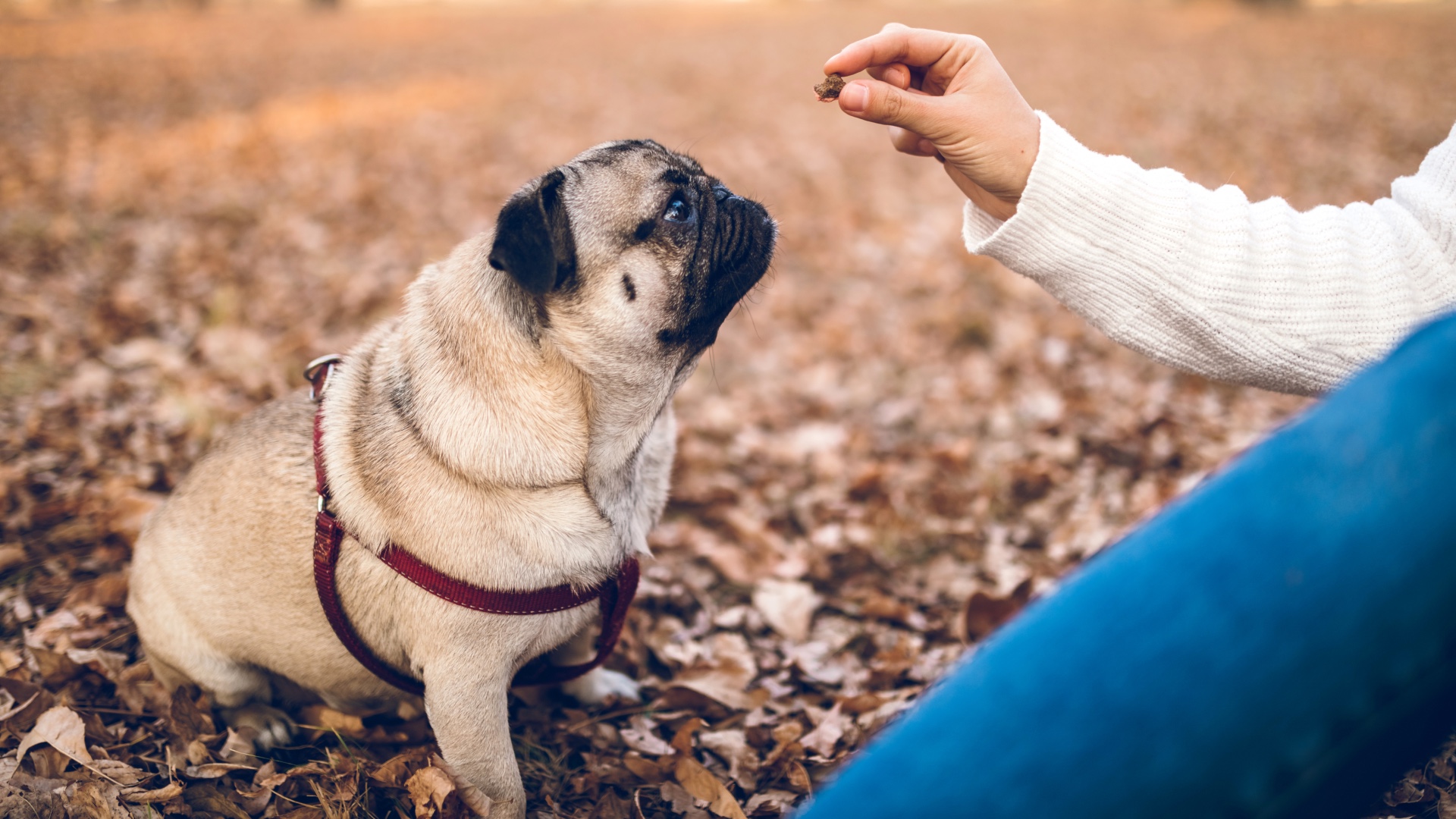
"Some dogs are wary of novel items or new situations, be patient and let them lead the way. Reward any desired interaction and interest in the game/ new toy — not every dog gets on with every toy or game," explains Richards. "Try to tailor your games to your dog's personality. If they're rambunctious and confident they may enjoy tug or chase high energy games, if they're generally docile and quiet they may prefer quieter more mentally stimulating games. Remember it's all meant to be fun. So if it's not, try something else."
And if your dog ignores every toy you bring home? Don't worry, there are still plenty of ways for the two of you to have fun together. Instead of using toys to exercise and stimulate your dog, try activities like nose work, agility, or herding. Many dogs prefer these more active pursuits over toys. You can also come up with your own games for your dog to try, like searching for treats hidden in the house or following scent trails that you’ve placed in the yard.
Games to play with dogs
Looking for inspiration for some fun games to play with your pup? Here are some of Richards' favorites that she loves playing with her own canine companion.
1. Chase: My dog loves a game of "rah". This is a little silly game my husband and pup have created together where my pup grabs a toy and hubby chases him in a loop around our connected kitchen/ diner/ lounge, intermittently changing direction to mix up the excitement (and saying the word "rah" as he's chasing him). If the game gets a little energetic, it moves into the garden for high speed “rah”. My pup loves nothing more than to tease hubby pretending he’s going to get close and “win” the prize before speeding off leaving “dad” in his dust.
2. Scent and seek games: "Scent and seek games are another favorite in our house. On a weekend, rather than feeding our pup in the traditional way, we like to use a snuffle mat to simulate that natural foraging urge and encourage scent seeking and play at meal times. It makes it more interesting and takes longer, stimulating his brain and giving him the satisfaction of the food reward at the end. One of us is always on hand to keep our pup engaged and ensure he gets all the yummy food although this one is quite self led in the most part for our pup."
3. Choose a toy: "In the evening when we are all calming down we like to play a little game of choose a toy. Our pup knows a few of his toys by name and we take time to teach him a new one every so often so we can ask for it by name. When he brings the correct toy back we have a little tug or 'bring it back' (also known as fetch) after lots of praise for him being so clever."
If you have a reactive dog, I played these 7 fun games to engage my reactive dog and they improved her impulse control is well worth a read if you're looking for fun games that can help your dog focus and strengthen your relationship at the same time.
How long to play with a dog
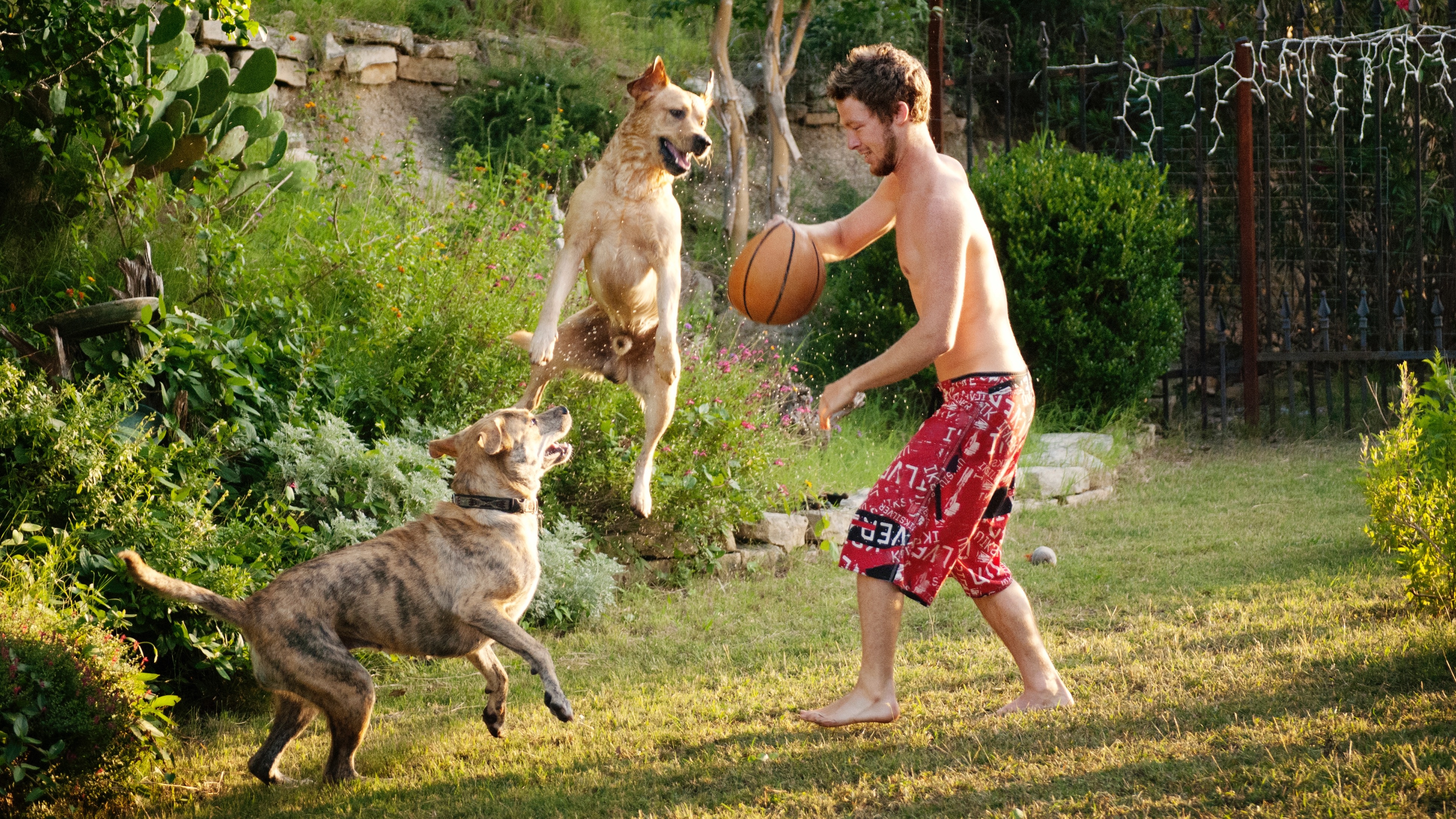
Your dog needs active play time every day in order to have enough exercise and mental stimulation to keep him healthy. Ideally, you should aim for about an hour of active play time every day for most dogs. This can be broken up into multiple short play sessions throughout the day, especially for young puppies who need lots of rest in between their brief bursts of energy. Adult dogs may be able to sustain longer periods of play. High-energy breeds and working dogs will likely need even more exercise and playtime to burn their excess energy, so you’ll need to tailor your play schedule to meet your dog’s individual needs. Most importantly, remember that playtime is supposed to be fun!
Playing with a dog has many proven benefits. Not only does it keep your dog stimulated and happy, but it can also reduce stress and improve your mood, too. Be sure to set aside some time to play and bond with your dog every day. Your dog will love you even more for it.
Look for more play and exercise inspiration? Here's 12 clever ways to have more fun with your dog on walks. This guide answers the common question, ‘Should I let my dog play with my cat?’ If you’re curious about what a doggy play date looks like, this feature has the answer.
PetsRadar Newsletter
Get the best advice, tips and top tech for your beloved Pets
Dr. Elizabeth Racine is a small animal general practice vet covering all things pet health and wellness. Her special interests include veterinary behavior, nutrition, and internal medicine.
As a freelance writer, Dr. Racine has written content for major companies in the industry such as the American Kennel Club, Merck Animal Health, Bayer PetBasics, Elanco, and CareCredit. In her free time, Dr. Racine enjoys playing trampoline dodgeball, hiking with her beagle Dasher, and spending time with her three mischievous cats.
